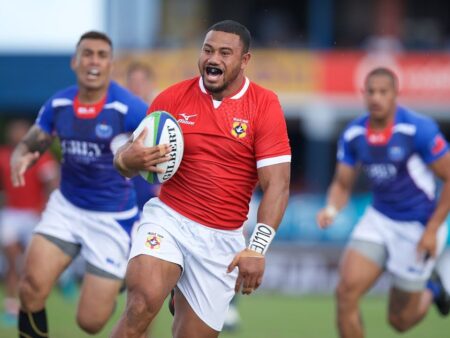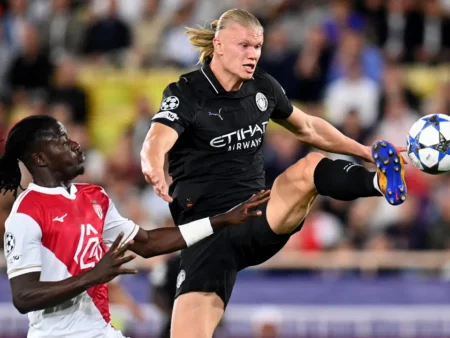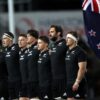In a period of intense evolution, American soccer finds itself at a fascinating crossroads, simultaneously fine-tuning its men`s national team for a home World Cup and witnessing a landmark transfer in the women`s game. These parallel narratives underscore a shared ambition: to cement the United States` position as a dominant force on the global football stage.
USMNT`s Strategic Blueprint for 2026: The South Korea Litmus Test
The road to the 2026 World Cup, hosted jointly by the U.S., Canada, and Mexico, is more than just a series of matches for the U.S. Men`s National Team (USMNT)—it`s a high-stakes, multi-year strategic undertaking. With the tournament looming, every friendly fixture transforms into a crucial opportunity for assessment and refinement. This weekend`s encounter against South Korea is no exception; it’s not just another game, but a pivotal “stress test” against an already qualified non-host nation, offering a rare glimpse into the team`s readiness.
Under the stewardship of Head Coach Mauricio Pochettino, the USMNT camp is a delicate blend of youthful exuberance and seasoned experience. Pochettino`s declared intention to “test newcomers” highlights a commitment to broadening the talent pool, yet the presence of key veterans serves as a constant, perhaps even ironic, reminder that raw potential must ultimately coalesce into cohesive chemistry. It`s a pragmatic approach, attempting to forge a formidable squad without the luxury of unlimited time.
For players like Tim Weah, who returns to the squad after club commitments and a recent loan move to Marseille from Juventus, the focus is unequivocally on the future. Weah`s recent comments about “leaving all that negative energy out the window” and “blacking out all the noise” speak volumes. The “noise,” he clarifies, refers to criticism from previous generations—a sentiment that suggests a generational divide and, perhaps, a healthy dose of defiance. One might observe that older players often possess the most potent form of constructive criticism: the kind that stings because it`s often rooted in hard-won experience. Nevertheless, Weah`s resolve to focus on “what we’re doing as a group” is precisely the mentality a team needs when the stakes are rising.
Recent setbacks, including defeats in the Concacaf Nations League and a loss in the Gold Cup final, have undoubtedly fueled this external “noise.” While Pochettino maintains there`s ample time for fine-tuning before the World Cup`s opening whistle, the South Korea friendly isn`t just about avoiding a “perfect performance.” It`s about demonstrating tangible improvement, instilling confidence, and generating the very positivity Weah champions. It’s an opportunity for the squad to show, rather than just tell, that they are indeed on an upward trajectory.
Alyssa Thompson`s European Odyssey: A Quest for Consistency and Global Stature
Shifting focus to the women`s game, the recent news of Alyssa Thompson`s impending transfer to Chelsea for an estimated $1.3 million sends ripples across the landscape of global football. This move, nearing a record for women`s transfers, isn`t merely a financial transaction; it represents a strategic career decision by one of the U.S. Women`s National Team`s (USWNT) brightest young forwards, joining fellow American talents like Naomi Girma and Catarina Macario at the London powerhouse.
Thompson`s departure from Angel City, just eight months after signing a long-term deal, might raise eyebrows, but the underlying motivation is starkly clear: the pursuit of stability and elite development. As the saying goes, “money talks,” but in professional sports, consistency often shouts louder. Angel City, despite being her hometown club, has seen four different head coaches in Thompson`s two and a half years—a coaching carousel that offers anything but the consistent environment crucial for a rising star. Chelsea, in contrast, provides a stable, top-tier platform with a well-defined vision, a five-year contract, and the opportunity to develop into her prime within one of Europe`s most dominant clubs.
This move is particularly pertinent for Thompson`s USWNT ambitions. With the next Women`s World Cup roughly two years away, playing time at the club level is paramount. The USWNT boasts an embarrassment of riches in attacking talent, with Head Coach Emma Hayes having extensively evaluated various options, especially in the wake of injuries to key players. Thompson, who has notched four goals and one assist since the USWNT`s Olympic gold last summer, has made a compelling case for inclusion. Her transition to the demanding environment of European football, with its rigorous schedules and tactical complexities, could very well be the catalyst that solidifies her spot for Brazil 2027.
Thompson`s transfer is part of a broader trend of top NWSL players seeking opportunities abroad, highlighting the increasing professionalization and global interconnectedness of women`s football. It underscores a strategic calculation by players to optimize their development and competitive edge, even if it means leaving domestic comfort zones.
Charting the Future: Ambition Across American Soccer
Both the USMNT`s methodical build-up to their home World Cup and Alyssa Thompson`s ambitious leap to European club football paint a vivid picture of American soccer`s current trajectory. These aren`t isolated incidents but interconnected facets of a wider ambition: to not only compete but to excel at the highest levels of the sport. The men’s team grapples with internal development and external pressures, while the women’s game continues to push boundaries in player valuation and global mobility. Together, these stories symbolize a dynamic era for American soccer, characterized by strategic foresight, a relentless pursuit of excellence, and an unwavering gaze towards future glory.










